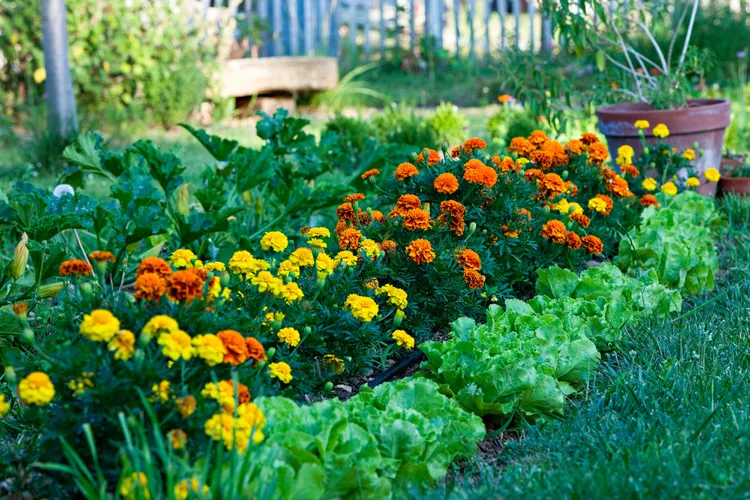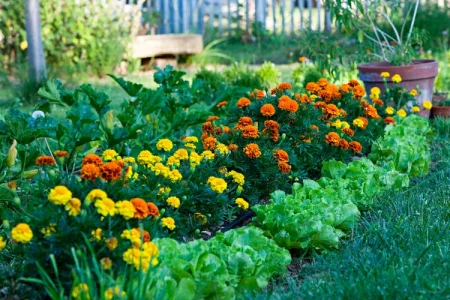
March 24, 2025 | About Us, Features, Sustainable Home Tips

Gardening enthusiasts often seek ways to optimize their plots for better yields, healthier plants, and reduced pest problems. One time-honored technique that has proven effective is companion planting. This method involves strategically placing certain plants together so they benefit each other in various ways, from improving growth to deterring pests. It can be as simple as planting stinky things, like mums or various herbs, by extra tasty plants like roses or even lettuce in order to deter deer. Read on for more examples that are not only practical, it can also be quite beautiful!

PHOTO: PHILIPPE S. GIRAUD / GETTY IMAGES
Dating back 12,000 years, North American indigenous people referred to a form of companion planting as the “three sisters” — squash, beans, and corn (Medium). Companion planting is based on the idea that certain plants can mutually benefit each other when grown in close proximity. These benefits can include pest control, improved growth, and enhanced flavor. The right combinations can create a more productive and harmonious garden.
Just as companion planting enhances garden productivity and health, bundling home services with Pigybak can create significant synergies within a community. Pigybak allows neighbors to coordinate their home service needs, whether it’s contracting, landscaping, or maintenance, to optimize resource use and reduce costs.
Benefits of Bundling Home Services with Pigybak:
Companion planting offers a natural, effective way to boost garden productivity, control pests, and improve plant health. By understanding and utilizing the synergies between plants, gardeners can create thriving, harmonious gardens. Similarly, Pigybak helps homeowners create synergies within their communities, promoting sustainability and efficiency.
Just as basil and tomatoes thrive together, so too can neighbors when they bundle their home services with Pigybak. This summer, explore the benefits of companion planting in your garden and consider how collaborating with your neighbors on home projects can yield fruitful results for your community. Download the Pigybak app today and start building a greener, more connected future.

I, [Customer Name], hereby authorize Pigybak to include my name, phone number, and address in their database. I also opt-in to receive notifications about upcoming services in my area. I validate that the information provided is accurate and represents my personal information, not others.
By providing this authorization, I understand and agree to the following terms:
I authorize Pigybak to set up a profile on my behalf, which may include my name, phone number, and address.
I consent to receiving notifications from Pigybak about upcoming services in my area via text message.
I acknowledge that I have the option to opt out of receiving notifications at any time. I can do so by directly contacting the contractor or managing my preferences in the Pigybak app.
I authorize Pigybak to share my contact information with the contracted service providers for the purpose of facilitating service delivery.
Pigybak agrees not to share my information with third parties without obtaining separate authorization from me.
I understand that Pigybak may update the terms and conditions, and I agree to review them periodically for any changes.
I acknowledge that the standard terms and conditions of the Pigybak mobile application, which can be found at www.pigybak.com/privacy-policy, apply to this authorization.
I acknowledge that this authorization is voluntary, and I have read and understood the terms outlined above. By providing my information, I consent to the terms above.

